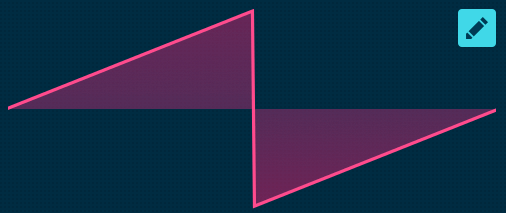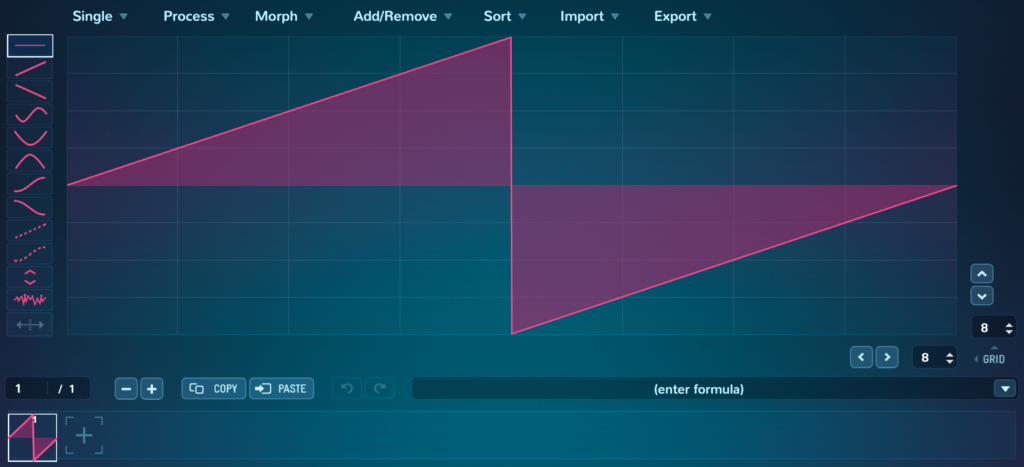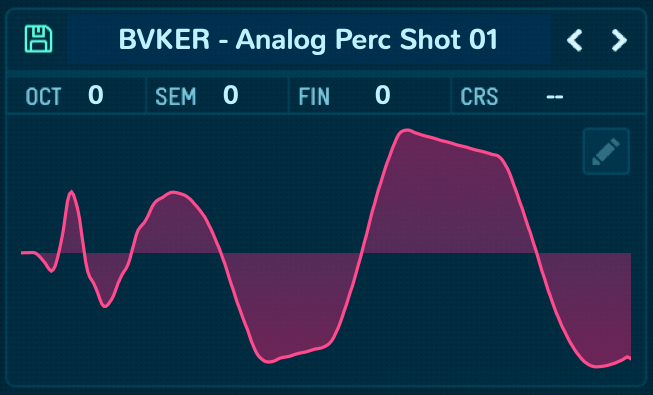If you just came here for the free Serum wavetables go ahead and click on the button below. For some insights on how these tables were made (and how you can make your own ones) feel free to scroll down and read the full post. Also, make sure to check out this tutorial if you don’t know how to put them into Serum.
Click Here to DownloadRecommended: Free Serum Presets (Best of 2021)
Analog Tables
All analog tables were made dragging synth shots by popular analog synths into Serum. I picked the cleanest wave forms and resampled them using pulse-width modulation (PWM). This way you can use the wavetable position (WT POS) for PWM while using the warp knob for whatever other mode you want to. I sorted all analog tables into 4 categories: Saw, Square, Sub and Custom, which contains all waveforms that can’t be classified as a basic shape.
FM Tables
FM synthesis is a technique using one waveform to modulate the frequency of another one. This usually results in a metallic sound and is often used to create bass patches for genres, such as Dubstep, Deep House and Future House. You can further use it to create mallet-like sounds like bells for example. My wavetable collection comes with 17 FM wavetables I made using Serum’s warp modes and resampling.
Growl Tables
My growl tables are often based on FM synthesis, too. However, they all have this saw-like “fart” sound you usually get from warp modes like bend. Combine them with a sub bass, modulation, maybe some OTT and you should get some decent dubstep growls similar to the ones artists like Virtual Riot are known for.
Hyper Tables
The hyper tables are inspired by an Au5 YouTube tutorial I watched a while ago. They also sound kinda metallic, but in another weird phase distorted way. You can use them to make Dubstep sounds, like Au5 did in his tutorial, but they should also work for other stuff.
Distorted Tables
Serum comes with a bunch of cool distortion types. I picked a sine wave, modulated the drive and resampled every single mode. Now you can make sounds using the characteristic overtones of each distortion mode while controlling the dynamics separately.
How To Make Your Own Serum Wavetables
Although you can find tons of free Serum wavetables online, you might want to make your own ones from scratch. Here are some of the techniques I used to make this wavetable collection.
Draw

If you want to “draw” a Serum wavetable click on the little pen icon to open the wavetable editor.

You can select the draw shape at the left side and the grid size at the bottom right corner. Once you’ve drawn a waveform you can add further ones by clicking the plus icon at the bottom.
Process

The wavetable editor further allows you to process single waveforms or entire wavetables via the drop-down menus above the wave form. If you’d like to learn more about every feature make sure to read the manual. You can open it by clicking on “Menu” and “Read the manual”. Some of the tools I’m using all the time are “Remove DC Offset”, “Normalize each (gained separately)” and “Morph – Crossfade”.
Import

You can simply drag and drop any sample into one of the oscillators. My favorite import modes are the top three ones. However, if you want to learn more about sound design and Serum in general you should get familiar with all of them. Once you import a wavetable you can process it further using the other techniques.
Render or Resample

This function was essential for creating most of these tables. It’s a bit complicated, but I found this post by Vespers explaining the subject quite good.
Save

Once you made a cool wavetable you can save it by clicking on the floppy disc at the top left corner of the oscillator you’ve used. Just pick a folder and type in a fitting name. That’s it!
Conclusion
Serum is a synth with nearly endless possibilities and I could never cover all of its features within a single post. However, knowing how to import, resample and edit wavetables is something that can really help you to step up your sound design game so I’d highly recommend playing around with it for a while. It won’t take much time until you start understanding what everything does and which steps you have to perform to achieve the result you have in mind 😉
Oh.. and if you’d like to make the whole learning process a bit more interesting you can pimp Serum with some of these free skins.


